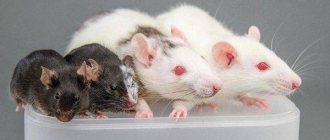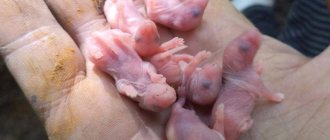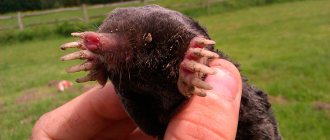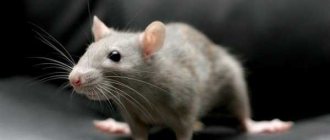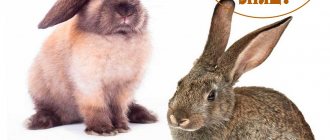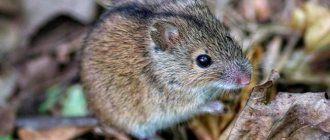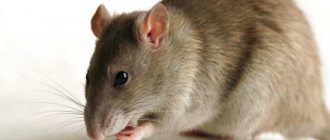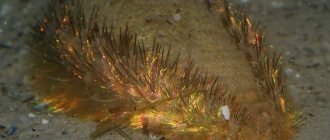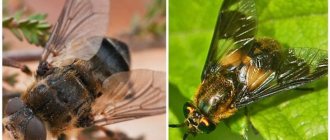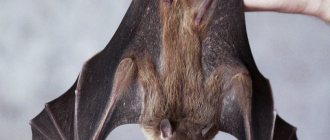Mice and rats belong to the group of cosmopolitan species, which implies a wide distribution area of these mammals, which live in all corners of the planet, with the exception of mountainous areas and zones of the Far North.
Both of these species are characterized as synanthropic, that is, even wild members of the family live near human habitation, which facilitates access to food sources. Most people believe that the only difference between rats and mice is the difference in size. This is true, rats are large, but there are other differences that are worth considering in detail.
What are the differences
A mouse and a rat have similar external characteristics. The main ones are: a pointed muzzle, the absence of thick hair on the tail, and the presence of sharp incisors that continue to grow throughout the life of the rodent.
But despite belonging to the same family and the presence of a number of external similarities, there is a difference between rats and mice
Differences between a mouse and a rat
To distinguish a mouse from a rat, you can consider not only an adult animal, but also a small representative of the species. Newborn rodents also have a number of external and behavioral characteristics inherent in representatives of a separate species.
The main differences between a baby rat and a mouse are:
- The difference between a rat and a mouse is the size of the tail. In the former, its length can be up to 110 percent of the body size, while the mice have a shortened tail, the size of which is no more than 60 percent of the body length.
- Small rodents have a round and less pointed head.
- To distinguish a rat from a certain mouse, you can look at its behavior. Small rodents prefer to eat, sit or sleep, huddled in a ball, while when gathering they behave freely.
The differences between mice and rats also lie in the characteristics of their fur : in small rodents it is softer and less dense.
Video
Funny animals. Mice and rats.
The main differences between domesticated rats and mice
Decorative rodents are widely popular as pets; they are clean, unpretentious, and do not require complex care.
The differences between domesticated rats and mice are as follows::
- The chromosome set of small rodents includes twenty-two chromosomes, while their large counterparts have only twenty. This feature makes it impossible to cross representatives of different species with the aim of subsequently producing offspring.
- Domestic rodents have a large body, the length of which is more than twenty centimeters, and the weight can reach six hundred grams.
- There are also external differences: the ears of small rodents are soft, rolled into peculiar little bags, while the ears of rats are dense and pointed.
- The body of small rodents is round, while large ones are long and elongated.
The lifespan of wild mice is no more than one and a half to two years. Domesticated rats, if cared for in accordance with the rules, live longer - up to three to four years.
Differences in intelligence
The main difference between a rat and a mouse is the level of intellectual ability. Large rodents, wild and domesticated, have remarkable intelligence.
They are careful, cunning, smart . It is extremely rare that these representatives of the rodent family fall into traps, and if this happens, the unlucky individual transmits a signal to the rest of the colony, thanks to which others will avoid the dangerous place.
Unlike mice, decorative rats are easy to train, they know their nickname and respond to it, they come up with games, attracting the owner to participate. They are sociable and love to spend time with people.
These unpretentious pets can be called companions. When buying a pet, you need to take into account its age, health, and habits of the animal.
Differences in nutrition
Mice and rats are omnivores. Their diet consists of cereals and vegetables, but at the same time they will not give up meat. Wild mammals have a peculiarity - they hunt in a whole flock, choosing as prey animals that significantly exceed them in size and body weight. This behavior is not typical for mice.
During periods of hunger, animals can feed on leather, paper, soap, and other organic matter, which determines a high level of survivability. These are synanthropic mammals that prefer to settle closer to human habitation, which makes it easier for them to access food sources.
When choosing food, animals may refuse poisoned grains or seeds, which is due to the presence of a keen sense of smell.
Who is stronger
Based on the above, we can draw logical conclusions about who is stronger, a mouse or a rat: rodents with greater body mass and size exceed their smaller counterparts in strength. Separately, it is necessary to say about the intellectual level of these animals.
Due to the presence of good mental abilities and living in a large family, rats multiply quickly, increasing the size of the colony in record time.
How are the tracks different?
Traces left by rodents also have significant differences, which are as follows::
- During a jump, the distance between the tracks of small animals is thirty centimeters. The jump length of large rodents is much longer, reaching one and a half meters.
- When moving, small mammals push off with their hind legs, while leaning on their front legs. Accordingly, the footprints resemble a trapezoid. Behind the trail you can clearly see the line left by the long tail.
- The size of the rat's front paws is two by one and a half centimeters, the rear paws are four centimeters in diameter. When an animal moves quickly, prints remain, the distance between which can be up to one and a half meters. If an animal moves at a leisurely pace, a characteristic thin chain of clear tracks remains on the wet ground or snow.
It is almost impossible to confuse the tracks left by animals, since rat prints are massive in size.
Nutrition
Baby rat
Both types of rodents are omnivores; if necessary, they will find food in any conditions. However, their food preferences are still different. Rats are true predators; their diet necessarily includes animal protein. Therefore, owners of decorative rodents must include the following products in their daily menu:
- lean meat - chicken breasts, rabbit, turkey, lean beef;
- boiled fish;
- seafood - shrimp, crabs, squid;
- fermented milk products - crumbly cottage cheese, yogurt without dyes, curdled milk, Varenets;
- dried mealworm and insects.
Mice are also not averse to eating protein food, but they tolerate its absence much more calmly. The basis of the diet of tiny animals is cereals (wheat, rye, oats, rice, millet), as well as seeds of various plants. They can attack insects and are also not averse to eating their larvae. In conditions of food shortage, they can even feed on leather items, soap, and paraffin.
If we talk about the drinking regime, then in rats it is more plentiful. For normal functioning of a sexually mature individual, 30-35 ml of liquid is required. It is enough for a mouse to drink 10 times less water - about 3 ml.
What they look like
The difference between large and small representatives of the family is especially noticeable if each parameter of the animals’ external appearance is assessed separately.
Rats and mice look like this::
- Dimensions. The body length of large animals can be about thirty centimeters, while the length of the average mouse does not exceed ten centimeters.
- Mouse eyes are larger than rat eyes.
- Rat tails are longer, more massive at the base, and completely devoid of hair, while mice have hair.
- Rat muzzles are elongated and oblong.
The color of animal fur can vary depending on the species. Decorative rodents have different color options, with white and black colors being common.
Intelligence
Little Rat
It has now been proven that the cognitive abilities of rats are much higher than those of mice. They adapt faster to changing environmental conditions, are more careful, and are able to independently regulate the size of the flock. For example, if the demographic situation declines, rats begin to actively reproduce. Mice do not have such abilities.
Scientists have found that the intelligence of rats is comparable to that of a cat or dog. Ornamental rodents can even be trained by performing simple commands and tricks. A domestic rat is able to respond to its name and use the litter tray to go to the toilet.
For a long time, it was believed that among all mammals, only humans were given the ability to smile. However, it has recently been discovered that rats also have a sense of humor. And if you wish, sometimes you can notice a slight smile on their sly little face.
Rats are also more social. They are able to take care of their relatives - they lick each other, feed weakened and sick individuals, and warn of approaching danger. Often rats even sleep together, in groups, pressed tightly against each other.
Similarity in appearance
Mice and rats, despite belonging to separate species, have a number of similar characteristics.
These include:
- Lack of thick hair on the tail. The exception is the black rat; the tail of this animal is covered with thick hair.
- Round eyes black.
- Presence of sharp anterior incisors.
Similarities can also be identified according to the characteristics of behavior, nutrition, and lifestyle in general.
Varieties of pet animals
Any species of rat differs in certain signs and characteristics: color, markings, body type and coat type. Therefore, rats are classified differently, and among them you can see completely different and unusual species. And many colors and types of coat were borrowed from dogs and cats.
After identifying the pasyuks, scientists still had a lot of time to search for other rats and breed new ones. Therefore, today there are many different colors, and eye color wins the hearts of many pet rodent lovers. The most unusual colors are considered to be the Himalayan and Siamese.
The eyes of rats can also surprise you, as can their color. Eye color can be: red, black, ruby. The most interesting are the different eyes, for example, one is black and the other is red. Such rats are not so rare. An interesting fact is that owners of black eyes see much better than their relatives with other eye colors.
A striking example of borrowing names from cats are sphinx rats, but it is rare that some animals are born with a color very close to that of a cat. All sources mention only 2 rats born with a tricolor color. The first was named Solaris, she was born in Alaska in 2002, and the second appeared in 2006 and was named Dusty Mouse.
How to determine the type of spoiled food
You can also distinguish a mouse from a rat by the type of spoiled food.
If there are rodents in the house, you can determine their species according to the following behavioral characteristics:
- Cereals. When eating cereals, rats consume the grains without leaving any traces behind. Mice leave behind husks and spoiled grains.
- Small representatives of the family prefer to eat in only one place, while large ones cause serious damage to the household and food supplies, choosing new food sources each time.
If rodents have settled in the house, it is important to be able to determine their species, since control methods differ. To exterminate mice, you need to choose a trap or insecticides; to remove large rodents, you need to call professional exterminators, since these animals are extremely careful, cunning, and smart.
Animal behavior
Mice in the house crawl out of their holes only when there is complete silence. If a slight rustle occurs, they try to move away unnoticed as much as possible. When a house is found, the whole family moves in there without first examining the territory. Due to the more primitive structure of the brain, they fall into simple mousetraps, and in many cases cannot recognize the poison used against them by humans. They move directly.
Rats always search the area first. Seeing a person, they are in no hurry to hide, they think over a safe route of retreat, and not finding him, they attack the enemy, biting the neck, and if such a bite is impossible, the limbs. The more adults die, the more babies are born to the remaining ones.
If you fail to catch a rodent, you should pay attention to the traces it leaves. The paw prints left by rats are quite clear and rare because they move by jumping
As for the tracks left by mice, they are more frequent. A careful inspection of the lower part of the walls will help you identify the uninvited guest.
When rats move, they press against the surface, leaving abrasions. Mice are more careful in this regard, so there are no characteristic marks left behind. Pasyuk is a rather aggressive creature that can attack a person if it feels that his life is in danger, which cannot be said about the practically harmless mouse, which often runs away at the sight of a person.
The house mouse is one of the most common species of mammals, whose life is closely related to humans.
In terms of mental development, a rat is significantly superior to a mouse. Some people even compare large rodents to dogs and cats. They are more careful and discerning. When choosing a new place to settle, Pasyuks first explore the territory to make sure it is safe. Because of this quality, it is quite difficult to get rid of rats using various poisons.
We suggest you read: How to get rid of rats in a chicken coop forever
The rat is an intellectual among rodents
Grows to a maximum of 50 cm, including the long tail. Weighs no more than 600 g. The best option for a new friend’s home would be a cage, always with thin, finely interwoven bars so that the rodent cannot escape. The larger and higher it is, the better. It is desirable that it has everything for sports and recreation - a rag hammock, rats are very partial to this, various steps, ladders, ropes and wheels in which you can run.
A rat needs a cage with equipment for sports and recreation.
Rats are very affectionate and flexible, and they are also the smartest of all rodents. They can remember their name and respond to it. They are not at all shy creatures; they behave calmly in unfamiliar surroundings. You can safely let them out for a walk on your shoulders, knees and room, although you should always remember that a rodent, no matter how intellectual it is, will remain a rodent, so it is better to put the wiring away. The animal is highly trainable and is capable of following basic commands. You can take him with you on a visit, as well as take him out for a walk in the warm season, or let him out on the grass, but only with a special leash, which can be purchased at a pet store.
Plants
The mouse is an object of hunting not only for predatory animals and birds. Nepenthes spathulata is a plant that eats mice. This plant predator belongs to the insectivorous family and grows on the islands of Sumatra and Java. It is a stem on which there are many pitcher flowers. They emit a sweet floral scent that attracts insects and small mammals. An approaching mouse is absorbed by the flower thanks to its slippery surface, due to which the rodent is no longer able to get back out.
The length of this unique plant can reach 5 m. Like owls, the plant predator swallows insects, rodents and other small animals whole. The bones, teeth and fur of the victim are digested thanks to special digestive enzymes.
Decorative baby rats
A domestic animal is more fertile. The female reproduces more often, and there are many babies in her brood.
The mother eats the dead rat pups. Some living offspring will be destroyed if their population is too large. Is this what wild people do? and domestic mammals.
The appearance of domestic animals is no different from their wild relatives. The decorative little rat in the photo sometimes has eyes that blend in with the color of the skin. Albinos have such eyes.
The means to control mice and rats are different. Therefore, it is important to correctly identify the rodent. An important role in this is played by the ability to distinguish little rats from rats.
Source
House mouse - appearance and behavior
The house mouse is the most common rodent living in human housing. Over many years of coexistence, its diet has changed significantly; the animal switched from cereals and nuts to plant and animal products that people eat. In the summer, mice can live in the fields, picking up grains, but by mid-autumn they will certainly move closer to humans and a warm home.
The intelligence of house mice is quite low, they are also not very careful, so they easily fall into even the simplest mousetraps. The population of these rodents is maintained only due to their rapid reproduction - females give birth to offspring every month, up to 100 mice per year
Their body length is 7-8 cm, in rare cases with good nutrition - up to 10 cm, weight - 25-40 grams. Thanks to such miniature dimensions, the mouse is able to squeeze through even a centimeter gap.
Interestingly, the colors of mice depend on the geographic location of their residence. In southern and central Russia, rodents with light silvery skin are common; in Siberia, their fur is more brown than gray. The line between colors is becoming increasingly blurred over time - animals travel on all types of transport, so sometimes you can see an animal of an unusual color.
